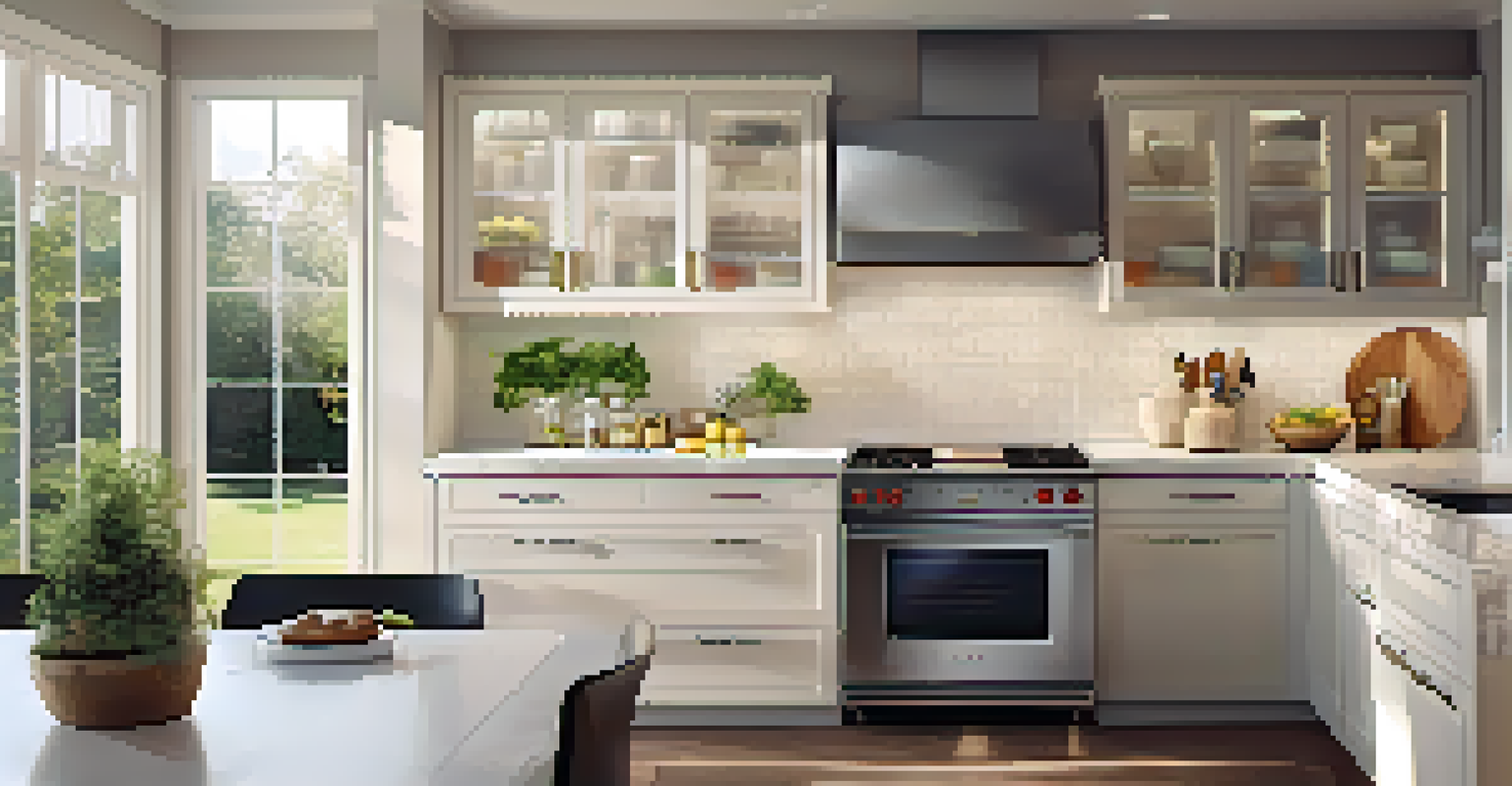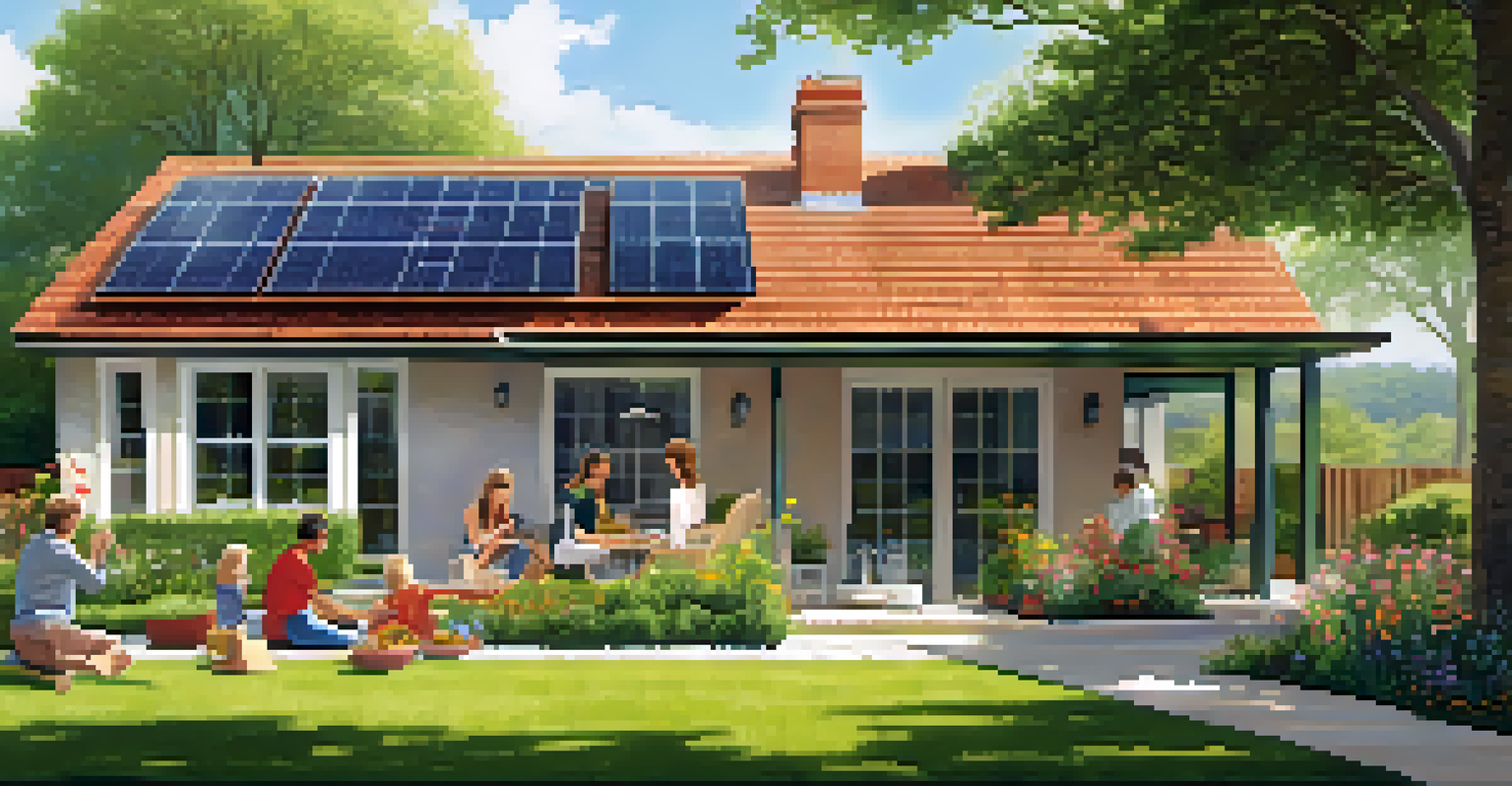Smart Home Innovations: Cutting Energy Costs Effectively

Understanding Smart Home Innovations for Energy Savings
Smart home innovations have revolutionized the way we manage our energy consumption. These technologies not only enhance convenience but also contribute significantly to reducing energy costs. By integrating smart devices into our daily lives, we can monitor and control energy usage more effectively.
The greatest threat to our planet is the belief that someone else will save it.
Imagine being able to adjust your thermostat remotely or set schedules for your appliances. This level of control allows homeowners to ensure that energy is used only when necessary, avoiding waste. These innovations range from smart thermostats to advanced lighting systems that adapt to your lifestyle.
Ultimately, the goal of these smart home technologies is to create a more energy-efficient living environment. By understanding how they work, we can leverage these tools to cut costs while also promoting sustainability in our homes.
Smart Thermostats: The Heart of Energy Efficiency
Smart thermostats are among the most popular innovations in energy management. These devices learn your daily schedule and can adjust heating and cooling systems accordingly, ensuring optimal comfort without unnecessary energy expenditure. For example, many smart thermostats can lower the temperature when you’re away, saving you money.

Not only do they provide remote access through smartphone apps, but they also offer insights into your energy usage patterns. This feature enables users to identify areas where they can improve efficiency, such as reducing heating during off-peak hours. Such adjustments can lead to impressive savings over time.
Smart Tech Saves Energy Costs
Integrating smart devices into your home allows for efficient energy management, leading to significant cost savings.
Additionally, smart thermostats can integrate with other smart home devices, creating a cohesive energy management system. This interconnectedness allows for a more personalized approach to home heating and cooling, ultimately leading to lower energy bills and a smaller carbon footprint.
Smart Lighting: Illuminate Your Home Efficiently
Smart lighting systems are another innovative way to cut energy costs in your home. These systems allow you to control your lights remotely, set schedules, and even adjust brightness levels based on the time of day. For instance, you can program your lights to turn off automatically when you leave home, reducing wasted energy.
Energy efficiency is not just a cost-saving measure; it’s an opportunity to create a sustainable future.
Moreover, many smart bulbs use LED technology, which is inherently more energy-efficient than traditional incandescent bulbs. By switching to smart LEDs, households can significantly lower their electricity consumption without sacrificing brightness. This simple change can lead to noticeable savings on your monthly bills.
Smart lighting can also enhance your home’s security by simulating occupancy when you’re away. By setting lights to turn on and off at random intervals, you create the illusion that someone is home, deterring potential intruders while still being energy-conscious.
Smart Appliances: Efficiency Meets Convenience
The rise of smart appliances has made it easier than ever to manage energy consumption in the kitchen and beyond. From refrigerators that track food freshness to washing machines that optimize water and energy usage based on load size, these devices are designed with efficiency in mind. They offer a level of convenience that saves both time and energy.
For example, many smart ovens can be preheated remotely, allowing you to prepare meals more efficiently. These appliances can also provide notifications when they’re done cooking, ensuring that you don't leave them on longer than necessary. Such features help reduce energy waste while making meal preparation easier.
Smart Thermostats Optimize Comfort
Smart thermostats learn your schedule to adjust heating and cooling, ensuring comfort while minimizing unnecessary energy use.
By investing in smart appliances, homeowners can enjoy the benefits of modern technology while actively participating in energy conservation. This trend not only helps to lower utility bills but also supports a more sustainable lifestyle.
Energy Monitoring Systems: Know Your Usage
Energy monitoring systems provide a detailed overview of your home’s electricity consumption. These devices can track energy usage in real-time, helping you identify which appliances are energy hogs. By understanding your consumption patterns, you can make informed decisions about where to cut back.
For instance, if you notice that your air conditioner is using significantly more energy during peak hours, you can adjust your habits accordingly. Many energy monitors also offer tips for reducing consumption, further aiding in your efforts to lower utility bills. It’s like having a personal energy coach right in your home!
Additionally, some systems can send alerts when energy usage spikes, allowing you to address issues promptly. This proactive approach not only saves money but also encourages more mindful energy consumption habits.
Smart Home Hubs: The Control Center for Efficiency
A smart home hub acts as the central control point for all your smart devices. This technology allows you to manage your energy-efficient systems through a single interface, simplifying the process of monitoring and controlling energy consumption. Imagine being able to adjust your thermostat, lights, and appliances all from one app!
Many smart home hubs also support automation, where you can create routines that optimize energy use. For example, you can set your heating system to lower the temperature when everyone leaves for work and have the lights turn off automatically. This level of automation can contribute significantly to energy savings.
Renewable Energy Enhances Savings
Combining renewable energy sources like solar panels with smart home technologies maximizes energy efficiency and reduces reliance on the grid.
Furthermore, a smart home hub can provide insights into your overall energy consumption, helping you identify trends and areas for improvement. With this centralized control, homeowners can easily prioritize energy efficiency in their daily routines.
Renewable Energy Integrations: Powering Your Home Sustainably
Integrating renewable energy sources, such as solar panels, with smart home technologies can amplify your energy savings. By harnessing the power of the sun, homeowners can significantly reduce their reliance on grid electricity. For instance, solar panels paired with smart inverters can optimize energy usage based on weather conditions and home demand.
Many smart systems can also track your renewable energy production, allowing you to monitor how much energy you’re generating versus consuming. This data can help you manage your energy usage more effectively, ensuring that you’re maximizing the benefits of your solar investment.

Moreover, some smart home systems can store excess energy generated from renewable sources for later use. This capability not only contributes to lower energy bills but also supports a more sustainable, eco-friendly lifestyle.
Conclusion: Embracing Smart Innovations for Cost Savings
Incorporating smart home innovations into your living space can lead to significant energy savings and a more sustainable lifestyle. From smart thermostats to energy monitoring systems, these technologies offer practical solutions for reducing energy consumption. The beauty of these innovations lies in their simplicity and effectiveness.
By embracing these tools, homeowners can enjoy the dual benefits of increased convenience and lower energy bills. As we become more aware of our energy usage, these smart solutions empower us to make better choices for our homes and the environment.
Ultimately, investing in smart home technologies is not just about cutting costs; it's about creating a more efficient, comfortable, and sustainable living space for ourselves and future generations.